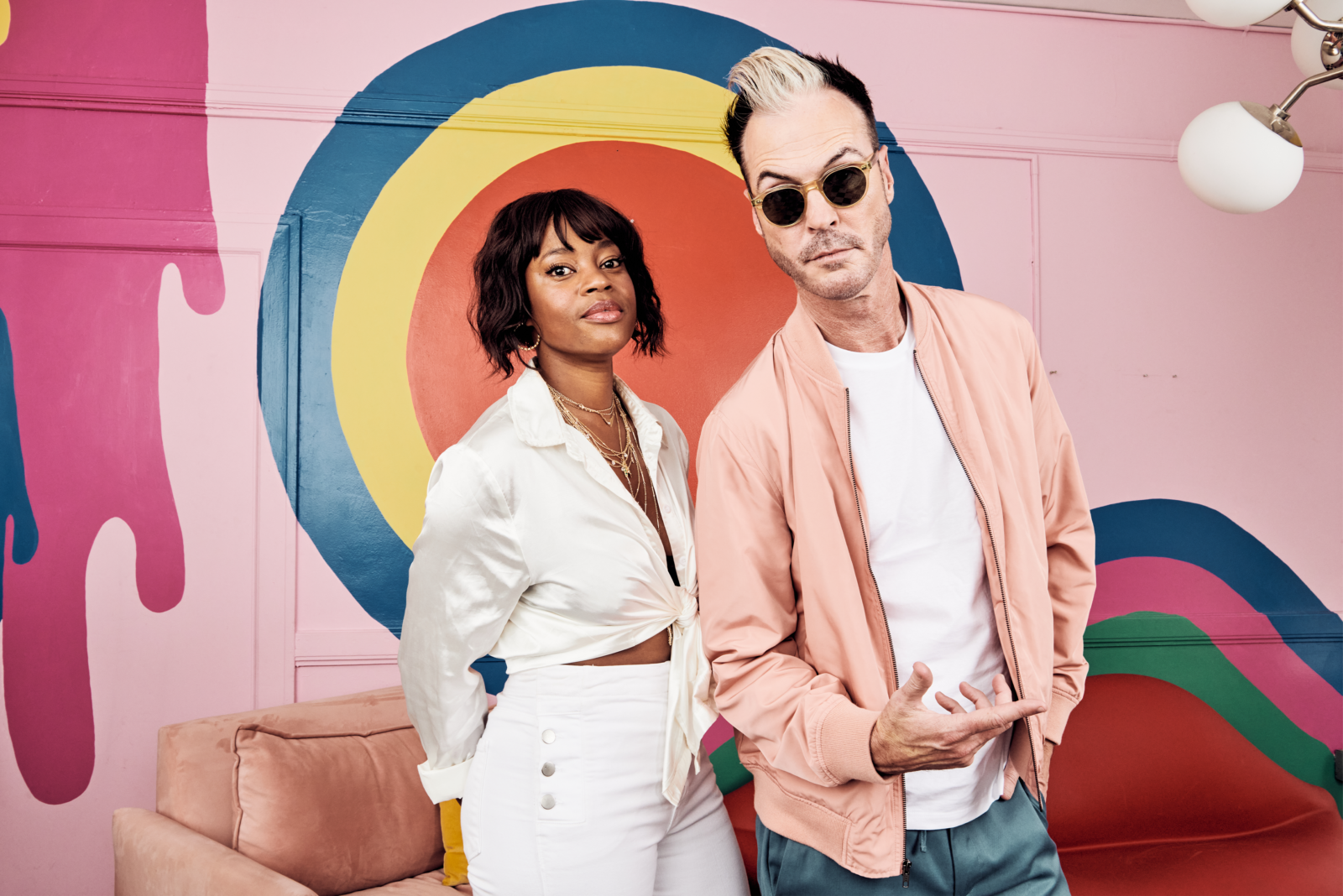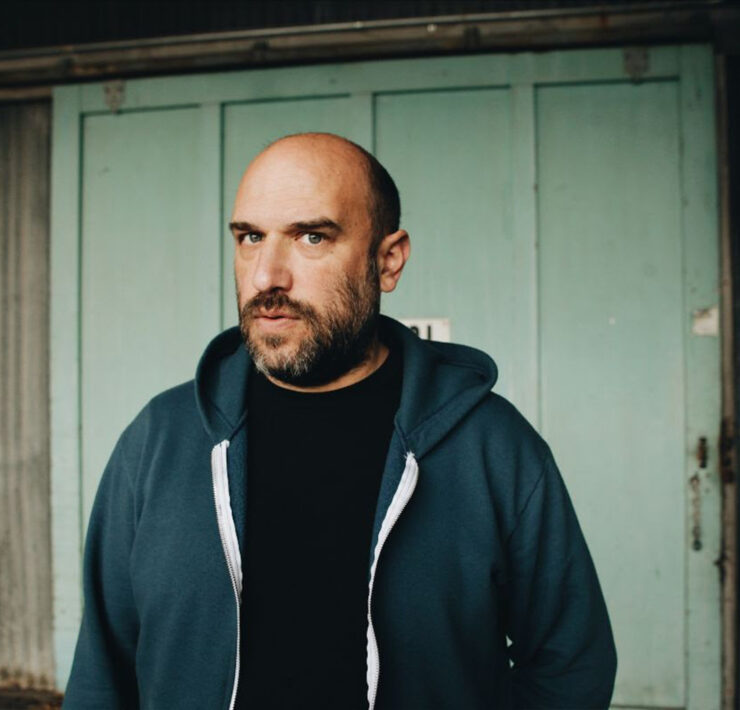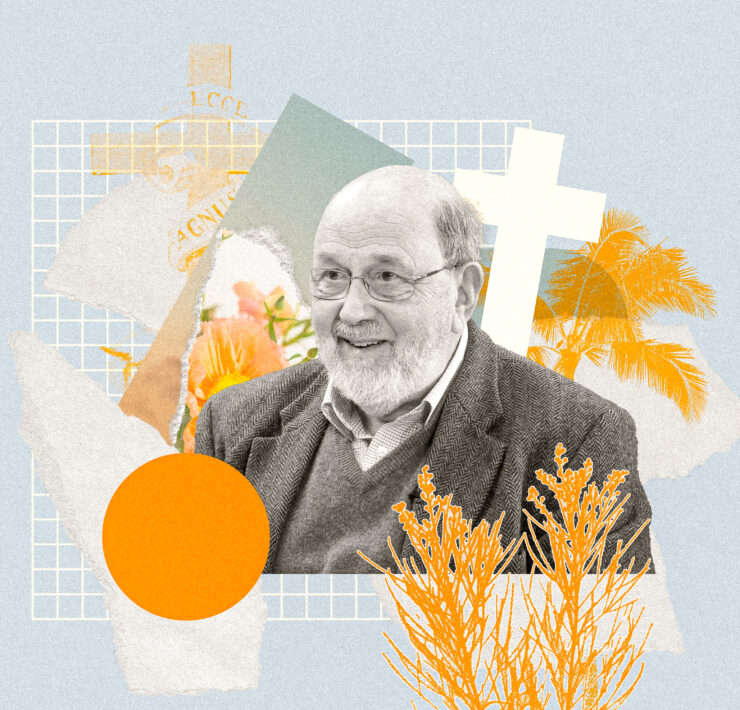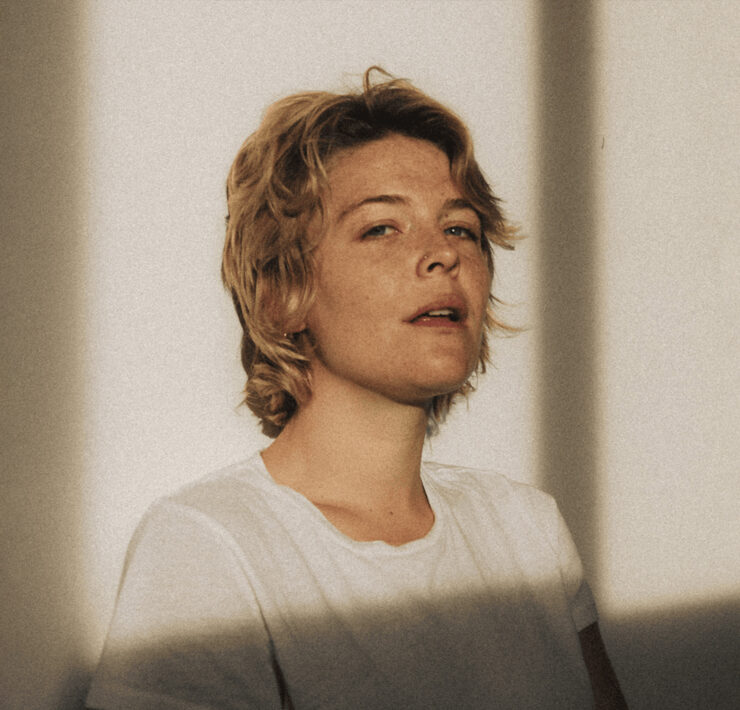Michael Fitzpatrick is constantly looking for something new.
For over a decade, the lead singer of Fitz and the Tantrums has had fun working with his bandmates to create their unique sound, blending soul, funk and pop in a way that could easily come off as too much, but somehow sounds just right coming from them. Yet, instead of sticking with one sound or influence, the band has looked to every genre, from Motown to punk rock, to explore their creativity.
Perhaps that’s why, in a time when everyone else was freaking out about a pandemic and lamenting a normal life, Fitzpatrick took it as an opportunity to embrace change and try something new.
During lockdown, Fitzpatrick embraced his new normal, working from home like everyone else while exploring new sounds and writing new songs.
A hundred new songs, to be exact.
After some careful consideration and collaboration with his bandmates, Fitz and the Tantrums had a new album: Let Yourself Free. To no one’s surprise, the album sounds much different than their previous records.
As the band has evolved over the years, they’ve strayed away from their indie sound and leaned further into high energy pop projects. But one thing that won’t change is their ability to make a catchy song you can’t get out of your head.
We sat down with Fitzpatrick to talk about the inspiration behind Let Yourself Free and how he’s constantly evolving as an artist.
Let Yourself Free was written post-Covid. How did the pandemic impact your creativity as an artist?
Michael Fitzpatrick: We had been on tour for two months as I was reading the headlines about this disease spreading. I remember telling my wife, “You better go do a big shop at Costco.” She’d be like, “What are you talking about?”
And she went — and this is like literally a month before anybody else, because three weeks later you couldn’t find toilet paper anywhere. And I was on tour, but the last couple of shows of our tour got cut short. So I came home, and as a touring musician, there’s all this fear that started in me.
So for me, the crazy thing was, I’m stressed out from not working and not making any money. I can’t tour, I can’t perform. This is how I make a living. All the stress added on from the hills of L.A. literally burning on fire, crazy floods, social unrest, Black Lives Matter. It felt like the world’s melting before our very eyes and disintegrating.
So there’s all this external stress, all this environmental stress, all this financial stress, and yet at the same time, for me, as a guy who’s been on the road non-stop for years, it was the first time in 15 years that I got to go to bed in my own bed every day. I’d wake up in my bed every day, see my kids for breakfast and drop them off every morning, put them to bed and give them a kiss goodnight every single night.
For me, after the first two weeks, that was a world’s record of me being at home uninterrupted. To have a year-plus of just being at home, focusing on my wife and my family… it was a stressful time, but it was also, at least for me and my career, kind of the best time in my life.
Where did inspiration for the album come from?
Every song kind of has its own path and its own journey. Some will start with a big concept, and that’s where you jump off from. Sometimes you’ll start with a cool drum beat or a piano part, or maybe you’ve been humming this melody, and then you kind of build around that.
There’s so many times where I sit down and tell myself, “Okay, today I want to write an upbeat tempo banger that says something fun,” and then halfway through it’s turning out to be like a sad melancholy song. What I’ve found in doing this for this long now, is that it’s really important to sort of let the song take you where it wants to take you.
To me, I always believe that a song is kind of a living organism of its own. If you try to manhandle it, it just kind of bristles you off of its shoulders, and you usually end up with something that’s not that good. But if the song starts taking a direction that’s different than what you set up, but you have enough trust and willingness to follow where the song takes you, it usually takes you to somewhere pretty magical.
Every choice you make affects the mood and the aesthetic and the interpretation of the song. And most of the guys in my band are far superior musicians than I am. They spent their life practicing one instrument, becoming the best of that one thing.
And me, I’m not as good of a musician, but I would say that I have a great ability to have a macro overview of what we’re doing, and in terms of those choices, aesthetic choices, that’s where I really shine and try and mix different genres in the way that we’ve kind of been known to do.
How do you feel like you’ve personally grown as an artist?
I work with a lot of amazingly talented musicians and incredible song writers. And there’s some people that are just born with this God-given talent that I could just strangle them for because they could just hear a melody instantly.
But I come from more of the school where I’ve had to just grind and learn and keep honing my craft to get to a place where I feel like now I might be decent. Like I’ll write nearly 100 songs per record.
I think one of the biggest mistakes that artists make is that they think that everything they do is awesome. But let me just tell you one thing: cool is not gonna pay the bills. More so than that, they just kind of believe their own hype or the hype of everyone around them, and they won’t put in that effort.
For me, I’ve always been incredibly hard working, but also totally fearful of failure. So with every record, I double down and I write as many songs as I can, because invariably, myself and the people I work with, we can write a song any given day, but the question becomes, “Is this an OK song, a good song or a great song?”
So I write a ton of music, at least 80 to 100 songs, and then I’m sitting there with this collection over the course of six months to a year as I’m writing the record, and over time, the cream of the crop rises to the top. Then I’m left with 40 songs that have potential and then I’m gonna cut it down to like 25, and eventually you cut it down to 12 to 15.
And when I’m in that final stretch, that’s where the theme of the record reveals itself. That’s where the arc of the whole entire album starts to reveal itself. The more you hone that, then you start to see the themes on the record.
How would you describe the theme for Let Yourself Free?
I think what sort of emerged from this was this collective experience that we’ve all had — not just in LA, not just in the United States, but the whole world. The whole world just walked through a pandemic, and what a journey with so many downs, but even some surprising ups for me that I was not expecting.
This journey has been so challenging for everybody. Nobody’s been able to escape it. Whether you’re Red, Blue, you live in an open state, a closed day, China, Europe — you’ve had to deal with this experience.
There were so many weird things about that time. So many missed opportunities: missed weddings, delayed weddings, missed graduation, didn’t get to have their senior year, didn’t get to have that freshman year a college experience, so much lost community and family.
For this record, we were debating on two of the track titles as the title of the album: the opening track that’s called “Good Intentions,” and then there’s “Let Yourself Free.”
And at the end of the day, it had to be “Let Yourself Free” because this is about a celebration of going out and doing all the things. We’d all been cooped up for so long, we’ve all held back, we’ve all lost so much. So this is the moment to shake off those cobwebs and chase those things you want and go be the fullest best version of yourself.
























